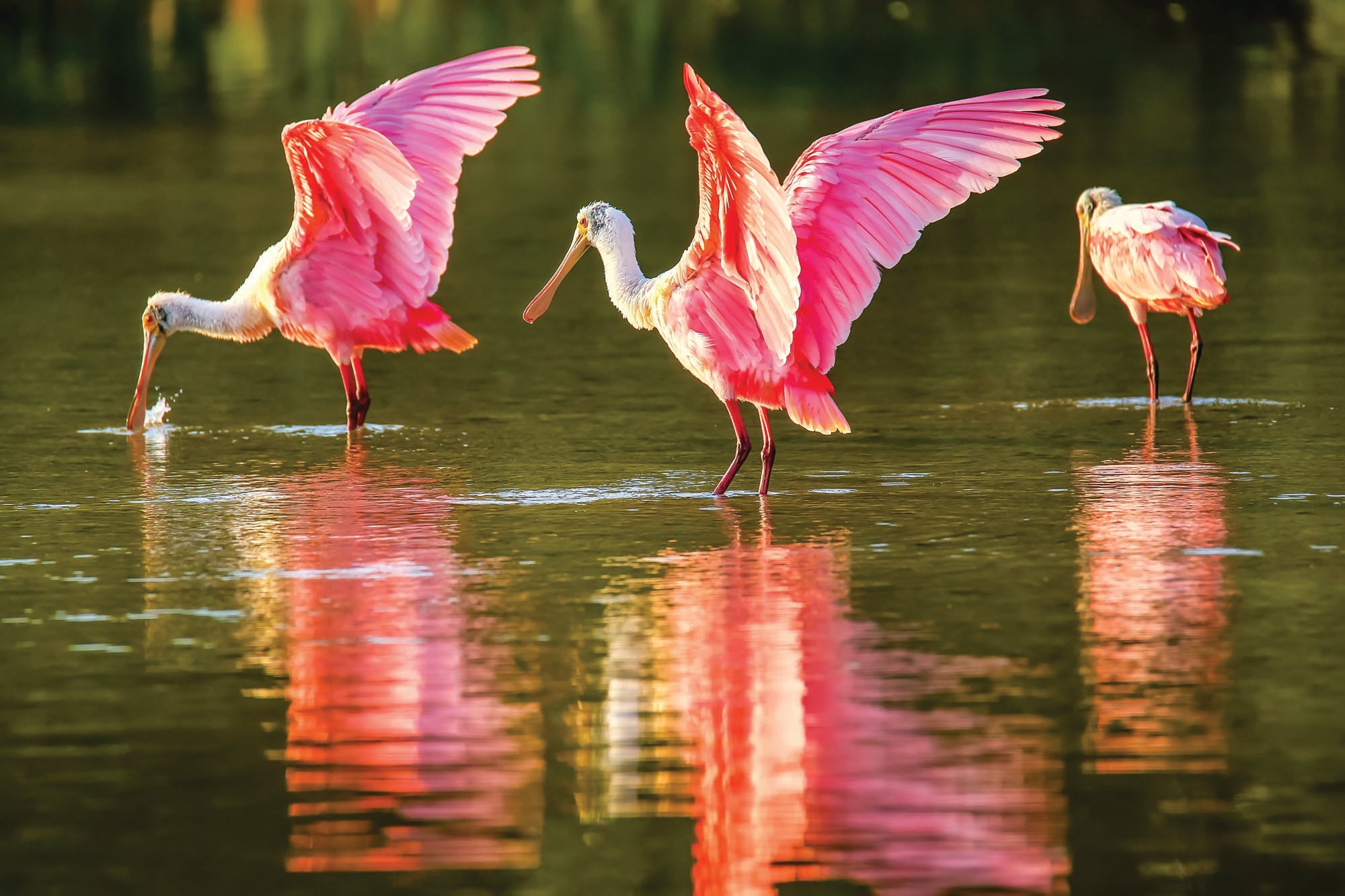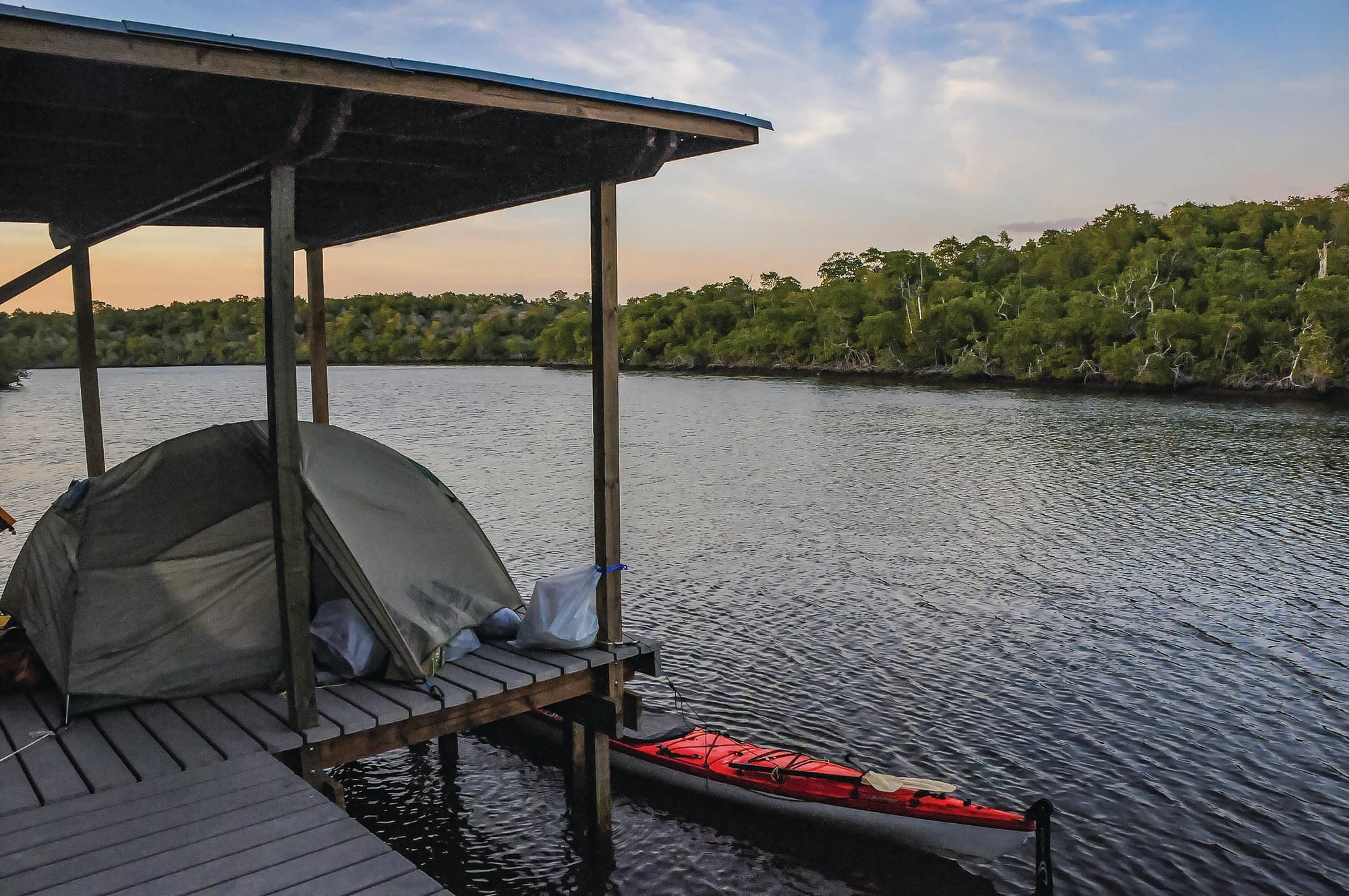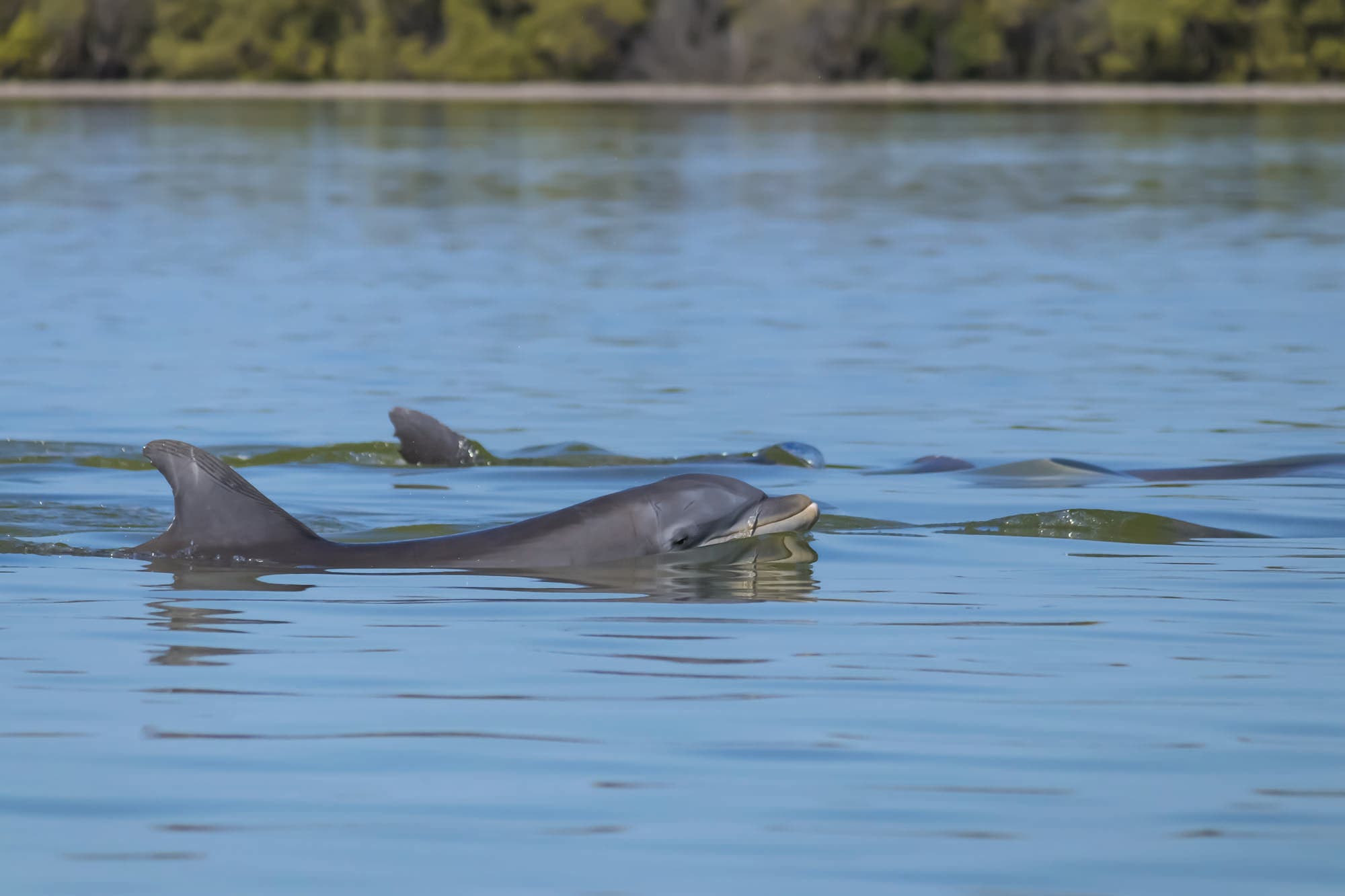Meet the (Scaly, Feathery, Blubbery) Neighbors in Everglades National Park

'Don Mammoser / Shutterstock.com'
I startle awake at dawn to the sound of heavy breathing an arms-length from our tent. Heart pounding, I bolt upright, ready to fend off sharp-toothed swamp monsters lurking under our chickee—a 10-by-12-foot wooden platform on stilts that serves as a personal island in Everglades National Park. But once I unzip the door, instead of an invading alligator, I spy two bottlenose dolphins circling, probably in search of snapper for breakfast. I breathe a sigh of relief, wonder replacing my worries, as I take in the 360-degree view of water reflecting the calm golden light of dawn.
This chickee in Oyster Bay is our first overnight stop on a 50-mile circumnavigation of Whitewater Bay in the southern half of the Everglades. It’s my husband Rob’s dream trip: a week of canoeing through a wilderness of tidal flats while casting his fly rod for redfish and snook hiding under mangrove roots. I, on the other hand, prefer boating in reptile-free mountain lakes. But locked in yet another eternal Montana winter, I had found myself intrigued by the idea of exploring somewhere warm. Then I read Peter Matthiessen’s Shadow Country, an epic historical novel about outlaws who escaped the authorities by hiding in the Everglades. After that I was hooked on the idea of seeing Florida’s most famous park for myself—its beautiful birds, abundant marine life, and rich cultural heritage.
Yesterday, just after Rob and I pushed off from Flamingo Visitor Center in a beat-up aluminum canoe loaded down with a week’s worth of water and food—our 3-year-old son, Talon, safely ensconced between us on a nest of dry bags—a crocodile as long as our boat had surfaced 6 feet away. I gasped, instinctively reaching back to grab hold of Talon as the croc sank back beneath the water. It wasn’t an ideal way to begin our trip, but we paddled on, determined that the year we spent planning this remote family adventure wouldn’t go to waste after just one startling wildlife encounter.

Back in Oyster Bay, Rob and Talon are still asleep beside me in the tent, both of them sprawled atop their sleeping bags in the humid December heat. Mosquitoes coat the mesh overhead, making me wish I didn’t have to answer the call of nature—or face the 3-inch-long banana spiders that live in the chickee’s porta-potty.
I quietly make coffee and oatmeal, gazing toward an endless horizon broken only by flat-topped mangrove islands scattered over still, gray water. A morning chorus of birds tunes up within the mangroves. As I listen to the trills and rustles of invisible wildlife, I start to understand why the Everglades have a history of sheltering bandits and desperados. These swamps could swallow secrets whole.
Later that morning, we’re back in the canoe, watching the water become clearer as we wind our way inland from the Gulf of Mexico. Our son giggles each time he spots a new bird; great egrets, tricolored herons, and roseate spoonbills swoop by, their plumage vivid against the dark mangroves. I learn how to judge the depth of the water by its color: amber in the shallows, greener as the bottom drops away, then finally a deep gray. After an easy 5-mile paddle, we set up camp on the Shark River chickee, where I do yoga while the boys swing in our hammock.
As the week goes on, I relax into the rhythm of our days and my once-looming fears are now diminished by the simplicity of the landscape and the way we travel through it. The world has shrunk to the size of my family, our canoe, and endless vistas of water and sky. We go days without seeing other paddlers, and spot only one alligator after our initial crocodilian sighting. I fall asleep easily each night under the sweep of the Milky Way.

The last morning we opt to take a shortcut back to the Flamingo Visitors Center via the Hells Bay Canoe Trail. As we turn out of a wide bay into the narrow waterway, we find it overgrown with spiderweb-laden thickets of red mangroves. I pull our bow forward by grabbing branches while Rob pivots the stern around what feels like hundreds of hairpin turns.
Then, I see something rocketing toward us in the narrow channel. The V of its wake is longer than our canoe. I strain to make out the shape beneath the murky water. Shark? Crocodile? Python?
“Hold on!” I call, adrenaline pumping. Rob quickly grabs the gunwale. Talon squeals.
A big dolphin races beside our boat, so close I can see its smile. I laugh aloud, half in relief, half in wonder, as it bolts away toward the open water behind us. As we pick up our paddles to head back to land, I find that my usual sense of satisfaction after a week off the grid is magnified by my pride in facing my wildlife fears with each paddlestroke. These wetlands may have a dark side, but it only serves to highlight their beauty.
Wildlife Viewing Ethics
Give the animals some breathing room. Bring your binocs and use them. If the animals start to retreat, don’t chase them. This will make them feel trapped or under attack. Also, never, ever feed them. It’s dangerous for them to eat food outside of their regular diets.
Respond appropriately to signs of distress from the animals. These vary depending on the animal, but could include aggressive flapping, pacing, or muscle tension. Avoid direct eye contact with these animals because they can interpret it as provoked aggression. If you sense that your presence disturbs the animal, give it space. If the animal doesn’t return to its normal behavior, leave the area without causing too much of a stir.
Avoid rookeries, nesting grounds, and denning areas. Intrusive visitors could disturb parents, causing them to flee and leave their young vulnerable to harm, such as predators or the elements. Always stick to designated trails and keep a safe distance from parent animals and their young. Also, if you just see young animals alone, trust that they likely aren’t. Their parents are likely waiting nearby.
Walk carefully. Remember that the wilderness isn’t your home—respect the animals that live there and the land they live on.
Do It
Trailhead: This route circumnavigates Whitewater Bay from the Flamingo Visitor Center. Rent canoes from Flamingo Adventures. Season: December through March to avoid hurricane season and the worst of the heat and mosquitoes. Permit: Camping permits for backcountry chickees ($21 plus $2 per person per night); reserve online or in-person at the Flamingo Visitor Center.